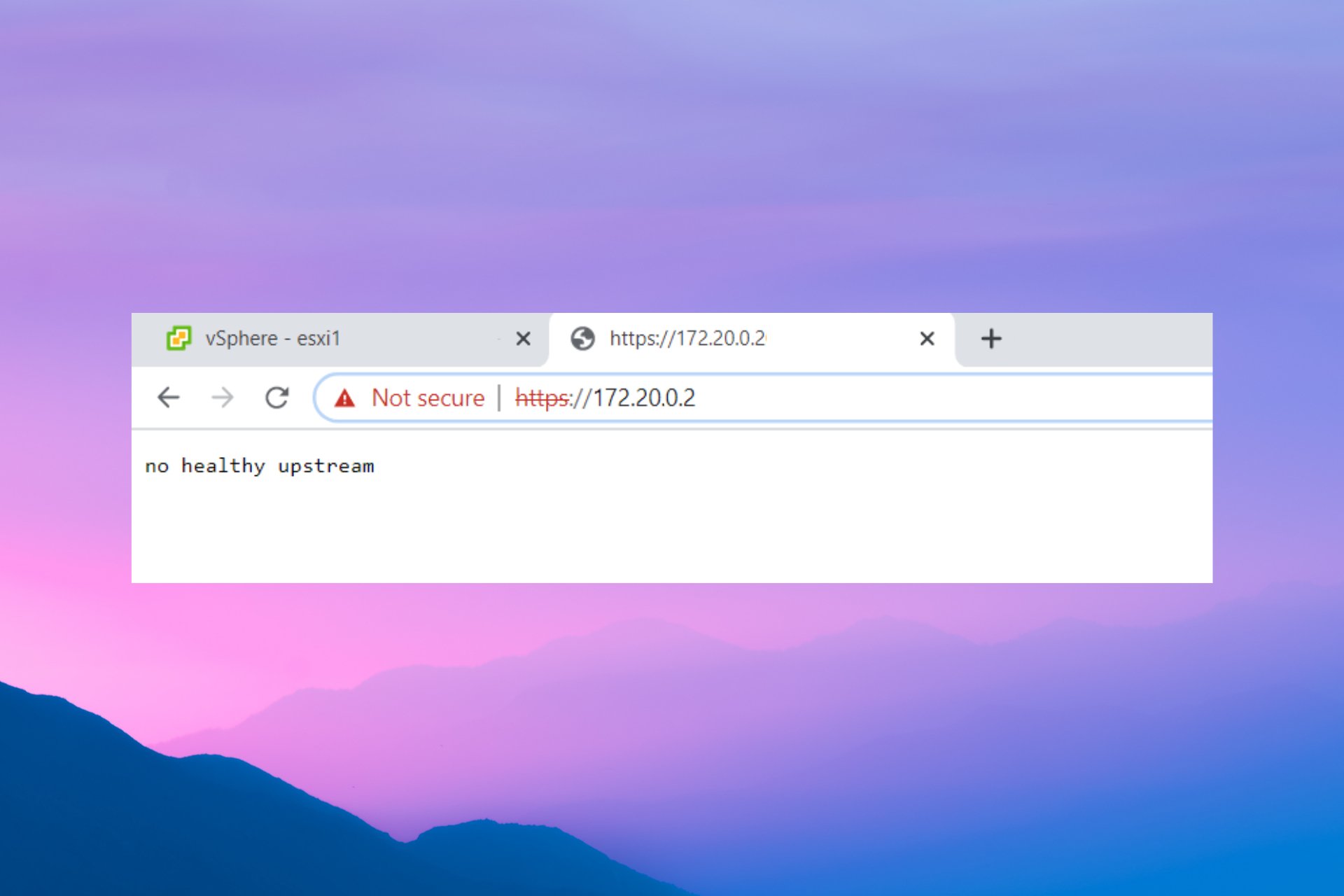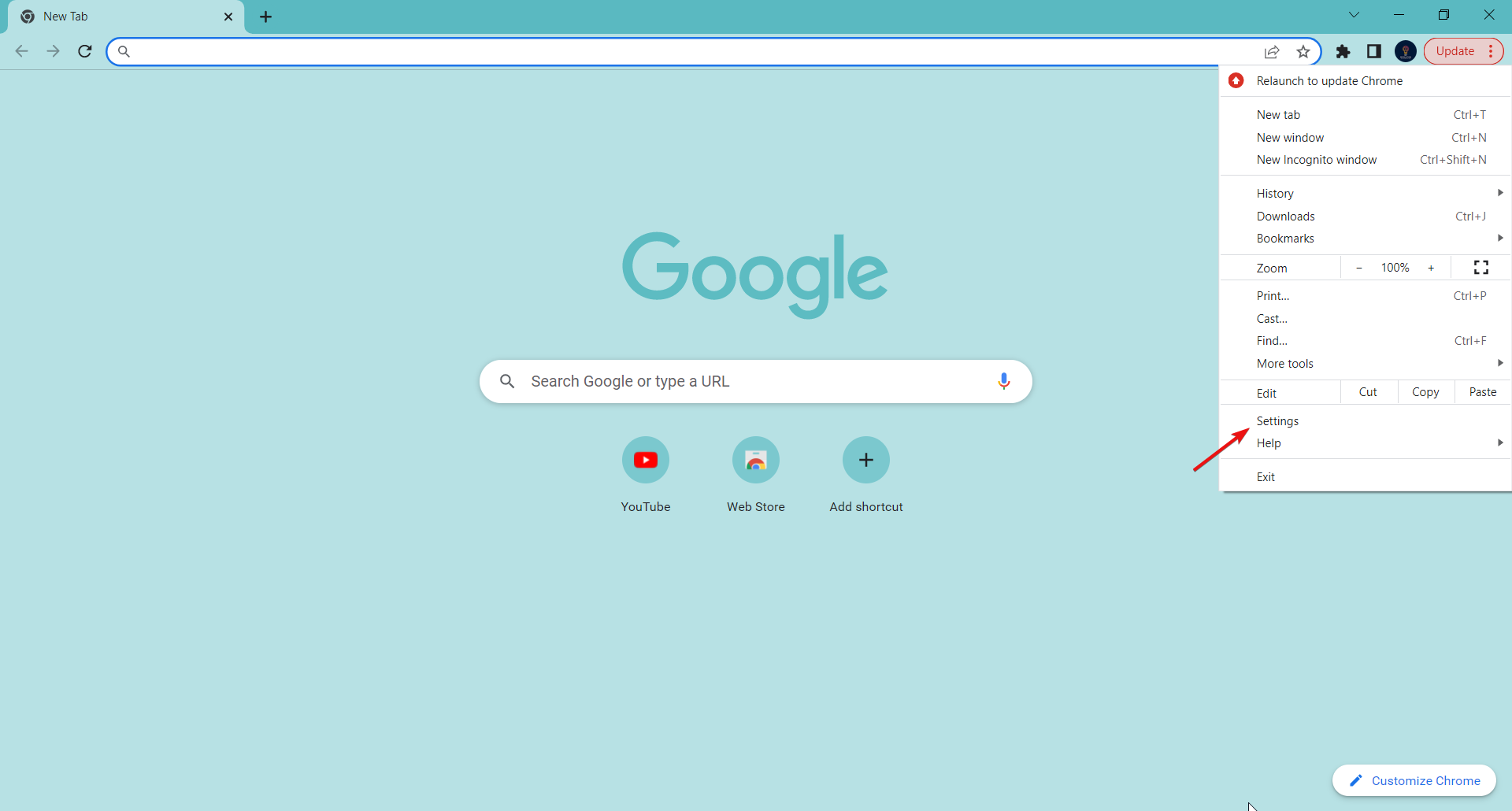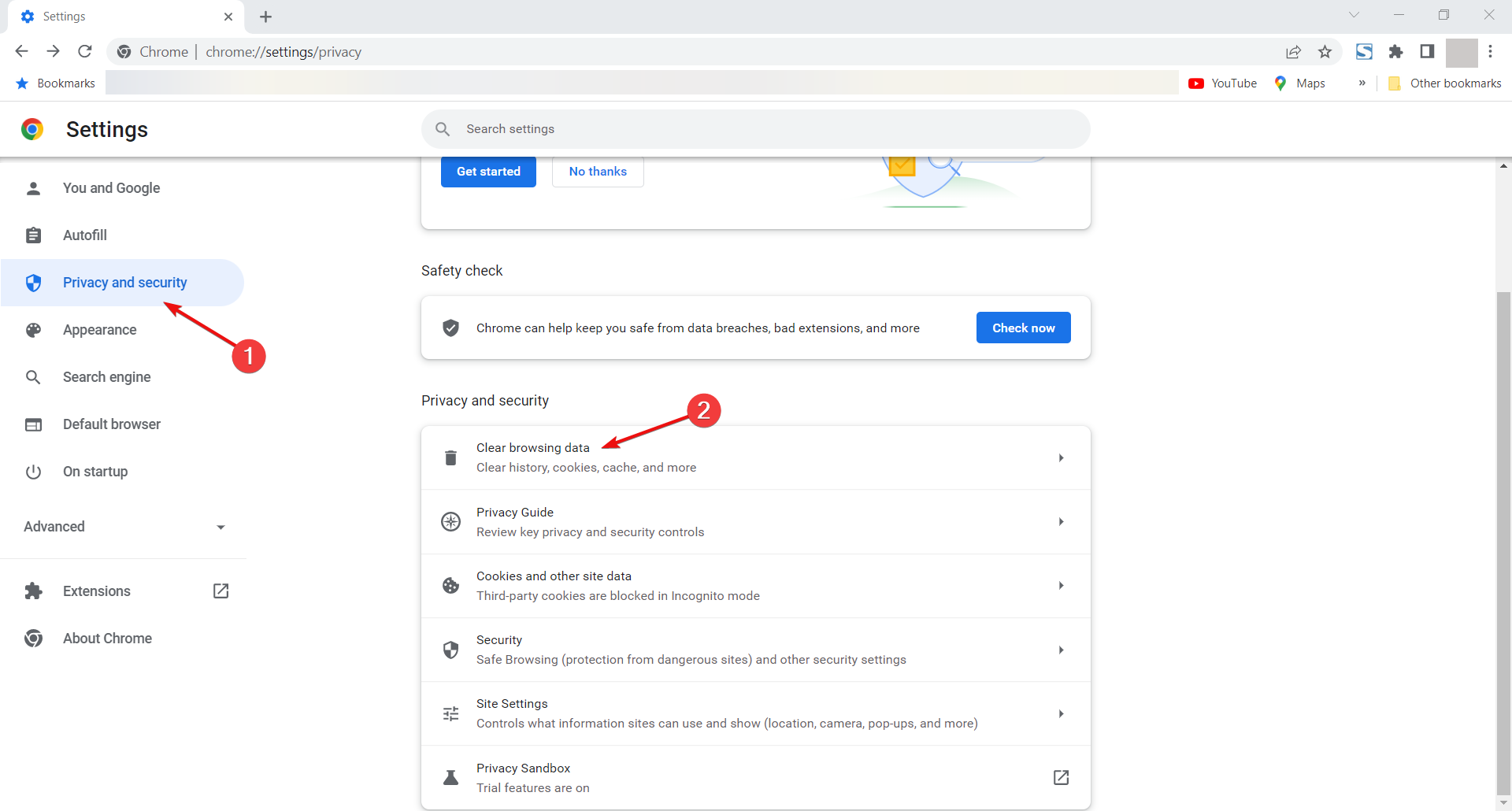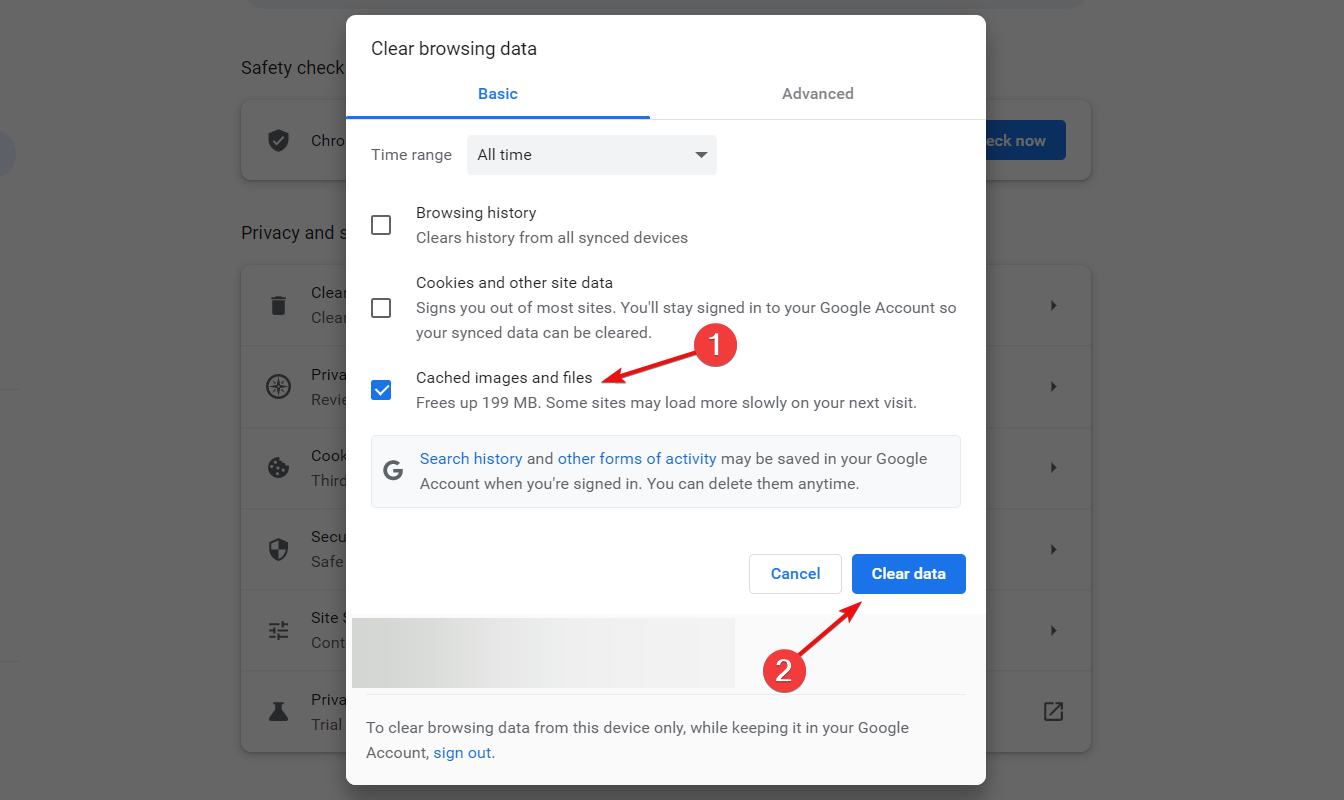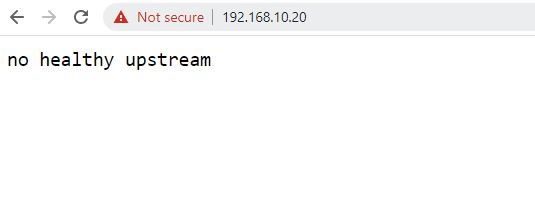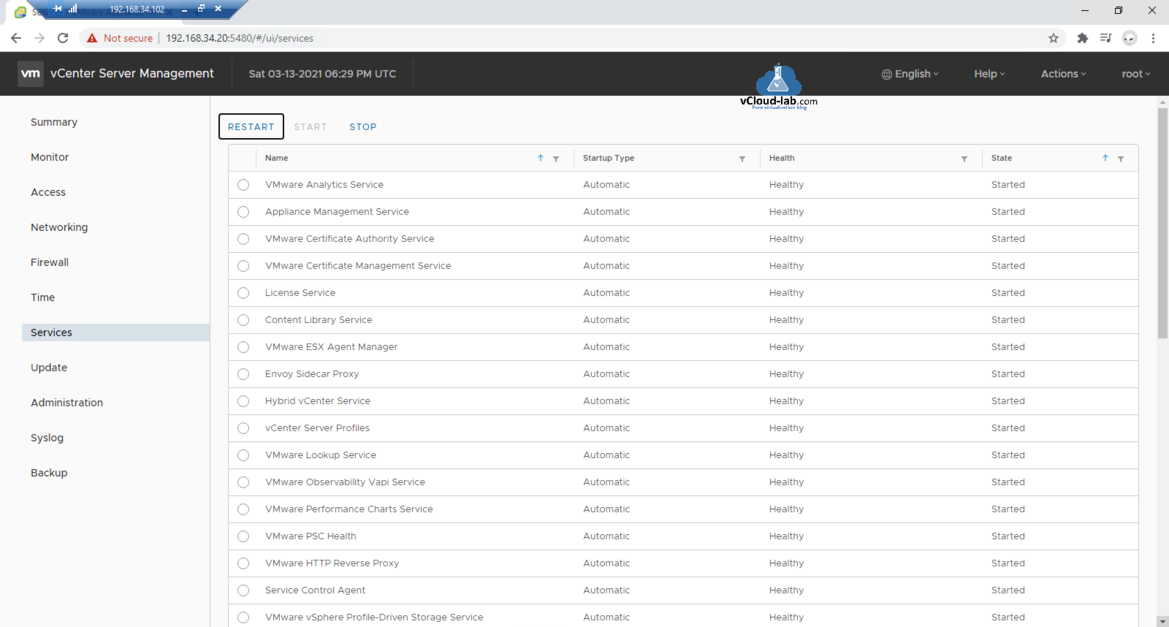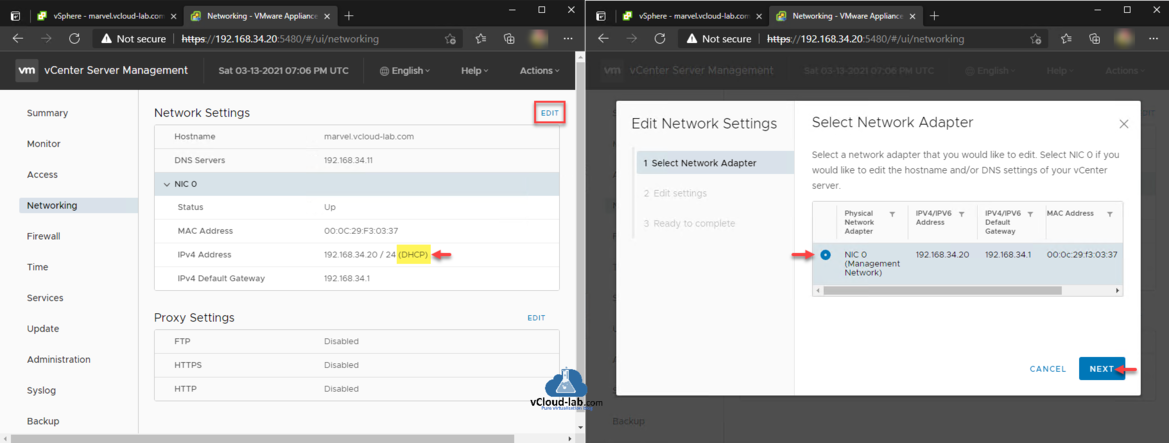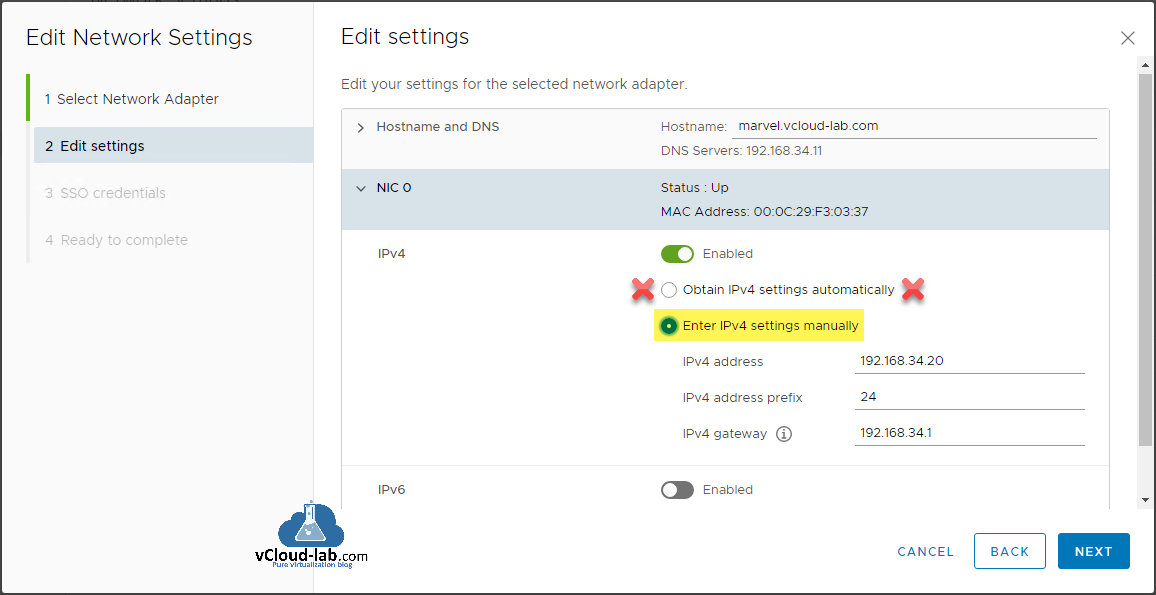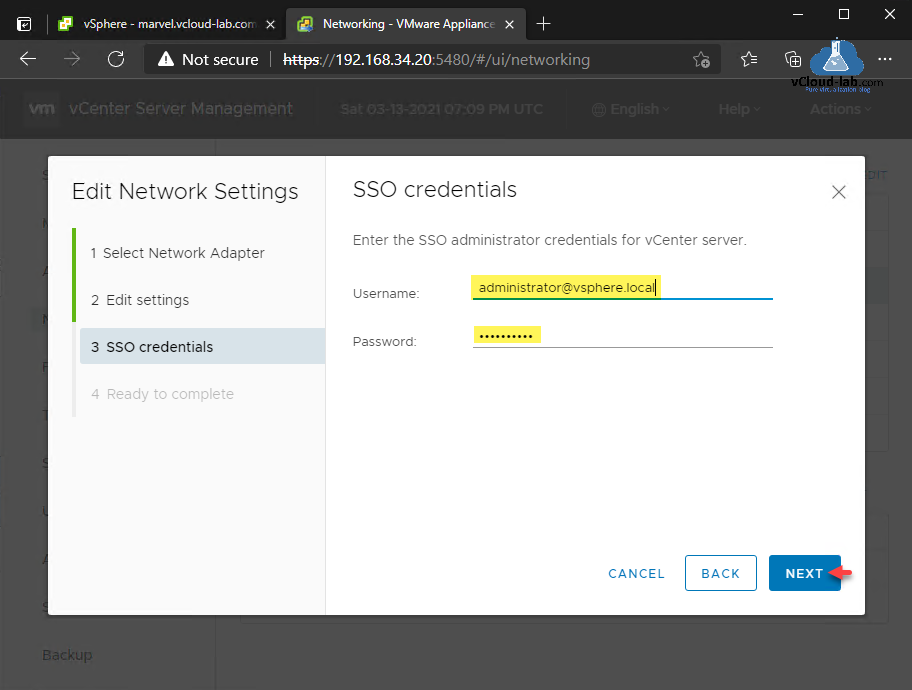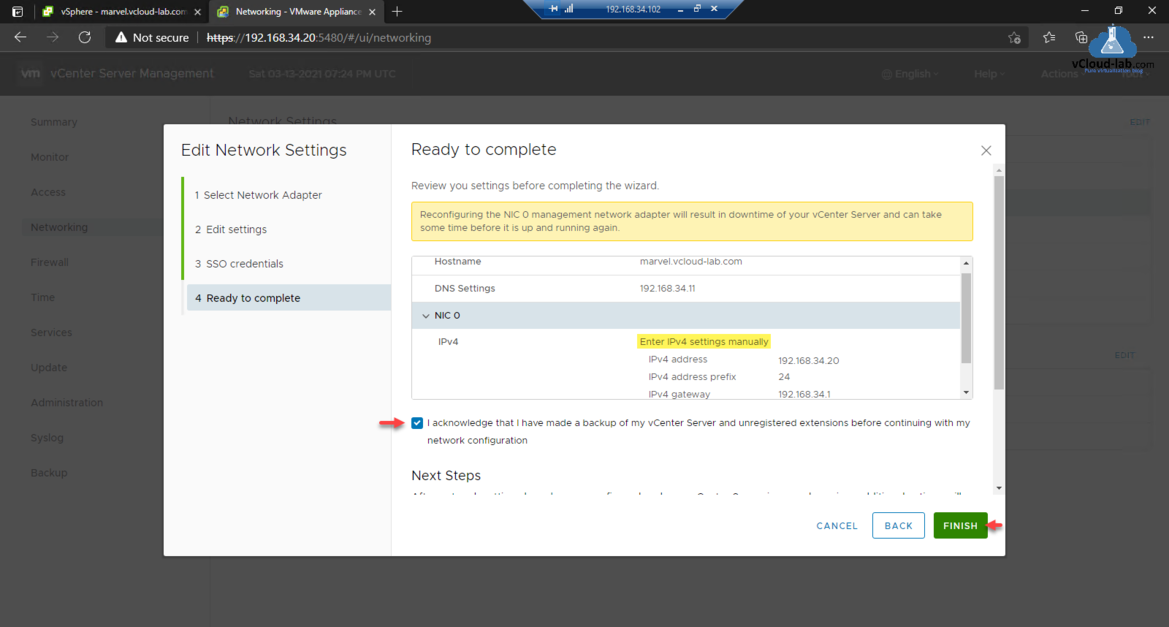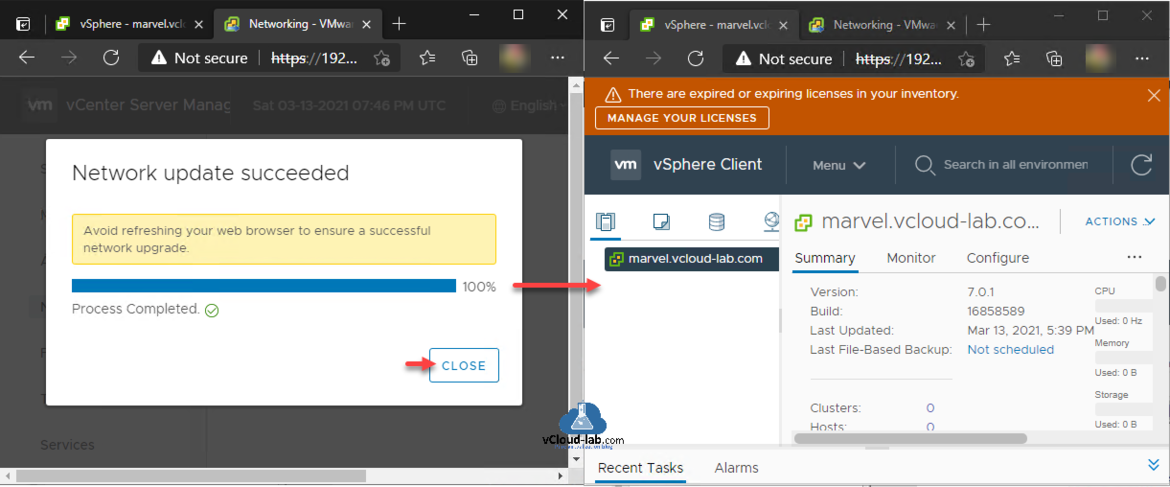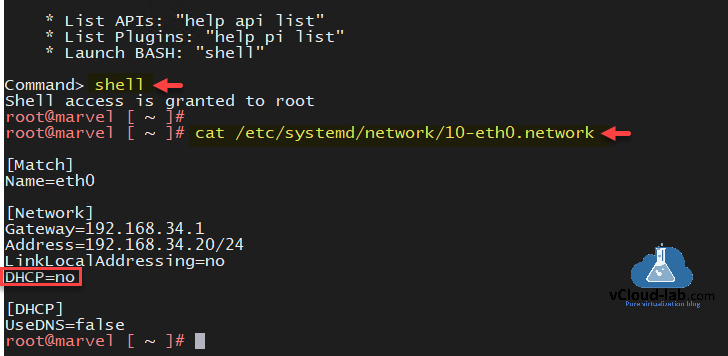Hi,
I am trying to install vCenter last 3 weeks. no matter what i do , I have same error: no healthy upstream
I tried to deploy image via UI, via manual OVA deployment, no mater what method I do , same problem exists.
login into https://<vcenter_IP_ADDRESS>:5480 works. (Server Management)
I did deployment, then upgraded compatibility to esx7, changed to proton OS, instead 2 CPU / 12GB ram, I increased to 8 CPU / 24GB RAM and I got performace increase, but same error when trying to Launch vsphere client (HTML5)
I used version 7.0.0.10600 during installation / build version 16620007
tried before with build 16386292, and had same thing.
Since I am using trial version, I am not sure do I have rights for official support?
I could troubleshoot on my own , but I am not sure where to seek logs?
anyone can pinpoint locations where logs are located if I access wia SSH ?
best regards
—
Mladen
This is a browser or server problem of many online services
by Vlad Turiceanu
Passionate about technology, Windows, and everything that has a power button, he spent most of his time developing new skills and learning more about the tech world. Coming… read more
Updated on March 17, 2023
Fact checked by
Alex Serban
After moving away from the corporate work-style, Alex has found rewards in a lifestyle of constant analysis, team coordination and pestering his colleagues. Holding an MCSA Windows Server… read more
- The no healthy upstream error is mainly caused by a bug, preventing certain apps from functioning optimally.
- It pops up on several platforms like vCenter, Spotify, eBay, Netflix, etc.
- The best way to fix it is by clearing your browser cache and on streaming platforms, it’s advised that you reload the media pages.
- Easy migration: use the Opera assistant to transfer exiting data, such as bookmarks, passwords, etc.
- Optimize resource usage: your RAM memory is used more efficiently than in other browsers
- Enhanced privacy: free and unlimited VPN integrated
- No ads: built-in Ad Blocker speeds up loading of pages and protects against data-mining
- Gaming friendly: Opera GX is the first and best browser for gaming
- Download Opera
Many of our readers reported getting the no healthy upstream error message in a lot of instances.
Most of them are happening on their browser, trying to reach services like eBay, Spotify, Netflix and others.
However, it is also occurring in vCenter and VMWare, and that suggests the idea that this is a server problem.
Here, we’re going to provide solutions for the general problem but also target the issues in the most occurring situations and apps.
What is the meaning of no healthy upstream?
The key word in this error message is upstream. And upstream in terms of coding means sending a pack of code to an admin to include in a certain app.
However, the no healthy upstream is totally different in the context of an error. It is simply a but that prevents running an app.
How can I fix the no healthy upstream error?
1. Clear the cache on your browser
- Click the Menu button in Chrome (the three vertical dots) and select Settings.
- Now, select Privacy & security from the left pane and click on Clear browsing data.
- Mark only Cached images and files and click on Clear data.
- Restart the browser and try visiting the service that returned the no healthy upstream error.
We have demonstrated this solution on Chrome since this error occurs in this browser most often. However, the process is very similar in other browsers as well.
2. Try a better browser
Since the no healthy upstream may be caused by the faulty communication between the browser and the server you are trying to reach, it’s only logical to look for alternatives.
We recommend using Opera because it’s a lot more stable and reliable than Chrome.
But the most important feature that sets it apart from Chrome is the presence of a free VPN service. You can also try to use it and see if it bypasses the no healthy upstream issue.
Besides that, you will benefit from a lot of native integrations like Facebook Messenger, WhatsApp, Instagram, and Telegram that will run seamlessly right from the browser.
They are readily optimized to work in Opera so this error shouldn’t appear.

Opera
With the integrated apps already optimized, you should have no issues browsing the web.
3. Restart your server and check the settings from your host
If no healthy upstream occurs on your server which is hosted by a third-party service, you should try restarting it.
Should the issue reappear even after the restart, check if the IP is provided from a DHCP service and if the DNS is correctly set up.
Communicate with your provider and get that information if you don’t know exactly what to do.
- Microsoft Edge for Chromebook: How to Download & Install
- The Video Cannot be Played Error Code: 102630 [Fix]
No healthy upstream error in vCenter
There are many readers who encountered the vCenter no healthy upstream error. But before getting into other tweaking solutions, there are some preemptive procedures you can undergo to make it work:
➡ Stop vCenter and restart the service – It will take a little while to restart so wait a few minutes before trying to access it again on your browser
Some PC issues are hard to tackle, especially when it comes to corrupted repositories or missing Windows files. If you are having troubles fixing an error, your system may be partially broken.
We recommend installing Restoro, a tool that will scan your machine and identify what the fault is.
Click here to download and start repairing.
➡ Upgrade your virtual machine – The no healthy upstream error can be caused by a problem between vCenter and your VM so upgrading your machine should help
➡ Change the settings in vCenter – Access the VM Options button, go to General options and select VMWare Photon OS; one of our readers managed to fix the problem like that so it’s worth trying
➡ Choose an older hardware compatibility option – Use the Change Hardware Compatibility Wizard and choose a different configuration from the drop-down menu
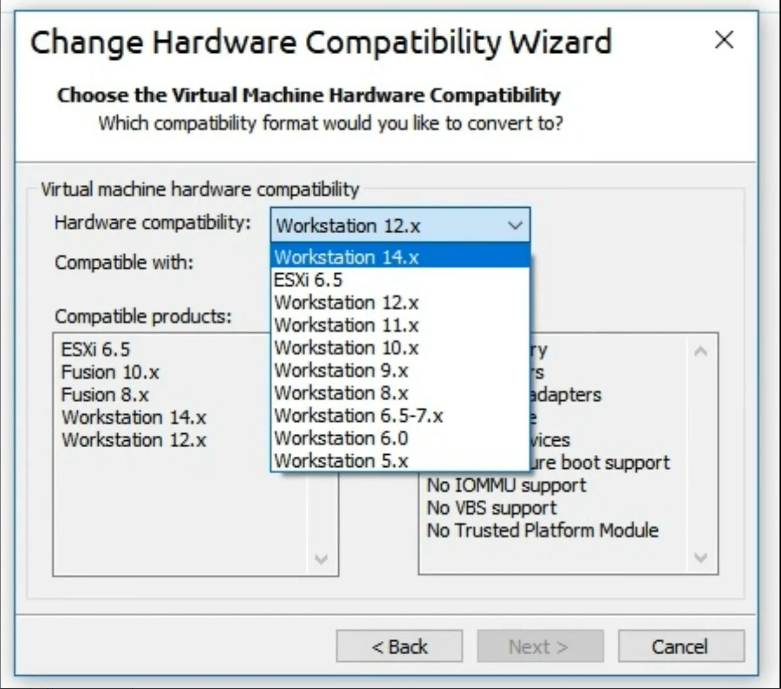
By changing the setting your VM will be able to adapt to usage for older and more stable versions of the app and allow you to try out different compatibility possibilities.
No healthy upstream error on eBay
However, several of our readers have experienced the no healthy upstream error on eBay on their desktops and even their mobile apps.
However, in this case, the no healthy upstream error is caused by technical issues on eBay and can only be fixed by them.
No healthy upstream error while using Netflix
If you’re using Netflix on your browser, the first two solutions from this guide should fix the problem.
To be more specific, try clearing your browser’s cache and cookies or, better yet, try another browser.
Another possible solution would be to restart your router. You should also try to open Netflix in an incognito window or use a VPN.
Opera has both functionalities so you can try the fixes with the same tool.
No healthy upstream error on Spotify
The situation on Spotify is exactly the same as for Netflix and it can be fixed by using the same methods we suggested above.
Clear the cache and cookies of your browser or use a better browser altogether. Opening Spotify in an incognito window and using a VPN are also to be considered.
As we recommended for Netflix, you could restart your router and see if that changes the situation.
What is an upstream timeout?
Upstream is a computer network term that refers to data transfer from a local computer or client to a remote host or server.
You get an upstream time out when the transfer takes too long, and the system interprets the request as failed.
As this issue is also related to virtual machines, you might be interested in our selection of the best VMs that work perfectly on Windows 11.
Here’s to hoping that you’ve found some enlightenment with this piece. Please share your thoughts in the comments section below.
After upgrading to vCenter 7 Update 1 , when I tried to browse vCenter HTML5 UI, I faced “no healthy upstream” error. I could access to vCenter Management Interface (VAMI) https://vCenter-IPaddress:5480 without any issues. I could also connect to vCenter Server through SSH but I realized couple of vCenter Server services could not start.

You can also check the details status of services by connecting to vCenter through SSH and run the following command:
#service-control --list Then I tried to force to start services by below commands:
#service-control --start --all
#service-control –-start {service-name}After waiting for a while, I got the underneath error.
After spending couple of hours reading logs and a bit of googling, I have been pointed towards different answers. First of all I went through all DNS, NTP and IP checks and in my case everything was working as it should.
In my scenario, vCenter’s SSL certificate were
replaced with a valid signed certificate and it was one of the reason that
points me to check certification validity. Beside this SSL certificate, there
are couple of other certificates that vCenter server uses. To get familiar with
vSphere certificates you can read the following vSphere documentation:
https://docs.vmware.com/en/VMware-vSphere/7.0/com.vmware.vsphere.authentication.doc/GUID-3AF7757E-A30E-4EEC-8A41-28DA72102520.html
In my case “Trusted root certificate, Machine SSL Certificate and SMS” were still valid . But ” Machine, vpxd, vpxd-extension and vsphere-webclient” were expired.
You can check the validity of each certificate by running below commands in vCenter server:
# /usr/lib/vmware-vmafd/bin/vecs-cli entry list --store TRUSTED_ROOTS --text | less
# /usr/lib/vmware-vmafd/bin/vecs-cli entry list --store MACHINE_SSL_CERT --text | less
# /usr/lib/vmware-vmafd/bin/vecs-cli entry list --store SMS --text | less
# /usr/lib/vmware-vmafd/bin/vecs-cli entry list --store machine --text | less
# /usr/lib/vmware-vmafd/bin/vecs-cli entry list --store vpxd --text | less
# /usr/lib/vmware-vmafd/bin/vecs-cli entry list --store vpxd-extension --text | less
# /usr/lib/vmware-vmafd/bin/vecs-cli entry list --store vsphere-webclient --text | lessBelow you can find the expired certificate screen shot:
In this case you need to update the expired certificates with use of vCenter certificate manager through running following command on vCenter CLI.
#/usr/lib/vmware-vmca/bin/certificate-managerchoose number 6 to replace Solution User certificates.
Then you need to answer the required information
- Do you wish to generate all certificates using configuration file : Option[Y/N] ? : Y
- Please provide valid SSO and VC privileged user credential to perform certificate operations.Enter username [Administrator@vsphere.local]:
Note: this is an example how to address each question you need to fill it out based on your environment.
- Enter proper value for ‘Country’ [Default value : US] :US
- Enter proper value for ‘Name’ [Default value : CA] : CA
- Enter proper value for ‘Organization’ [Default value : VMware] : “ vElements lab”
- Enter proper value for ‘OrgUnit’ [Default value : VMware Engineering] : VELEMENTSIT
- Enter proper value for ‘State’ [Default value : California]: California
- Enter proper value for ‘Locality’ [Default value : Palo Alto] : Palo Alto
- Enter proper value for ‘IPAddress’ (Provide comma separated values for multiple IP addresses) [optional] : you can press Enter or provide the required information
- Enter proper value for ‘Email’ [Default value : email@acme.com] : Press Enter
- Enter proper value for ‘Hostname’ (Provide comma separated values for multiple Hostname entries) [Enter valid Fully Qualified DomainName(FQDN), For Example : example.domain.com] : vc.velements.net
- Enter proper value for VMCA ‘Name’ : vc.velements.net You are going to regenerate Solution User Certificates using VMCA
- Continue operation : Option[Y/N] ? : Y
After I successfully updated the certificates , vCenter
services got started and I could reach the vCenter UI.
Below you can also find other solutions I found
when I was googling
Suggested answers to check
- Upgrade VMware Hardware version and choose the
correct OS for vCenter
Note: Take a snapshot from
vCenter Server VM before hardware version upgrade, as it’s none reversible task to previous versions.
- Shutdown the vCenter > right click on the VM
> Compatibility > Upgrade VM Compatibility. - Right click on the vCenter and choose Edit
settings > VM Options > General Options > Select VMware Photon OS - Check DNS (you should be able to resolve FQDN
names from vCenter) - Check NTP (Time should be synced and correct
between ESXi hosts and vCenter Server) - vCenter Server IP address should be set Static
All of the services which are set to Automatic start are running without any errors or warnings. Hopefully this will help you to solve your issue.
When you encounter no healthy upstream error, it means that the vCenter is not up and ready yet. Just wait a few minutes before connecting to vCenter via a web browser.
But every no healthy upstream error is because of an unprepared vCenter. There might be some issue that does not allow the services of vCenter to be running properly.
There is another guide to help you fix no healthy upstream error of vCenter 7. It might be occurred after upgrading vCenter 6.7 to vCenter 7.
- Shutdown the vCenter
- Upgrade the VM hardware version
- Edit settings > VM Options > General Options > Select VMware Photon OS
Note: make sure you have allocated enough memory and CPU for the vCenter 7 virtual machine. The vCenter 7 is CPU and memory hungry.
Read the related community post on vMware forum.
Related article: Setup a Penetration Testing Lab.
Hardware Requirements for the vCenter Server Appliance
When you deploy the vCenter Server appliance, you can select to deploy an appliance that is suitable for the size of your vSphere environment. The option that you select determines the number of CPUs and the amount of memory for the appliance. The hardware requirements for a vCenter Server appliance depend on the size of your vSphere inventory.
The upgrade of the appliance is a migration of the old version to the new version, which includes deploying a new appliance of version 7.0. You can deploy the new vCenter Server appliance on an ESXi host 6.5 or later, or on a vCenter Server instance 6.5 or later. Your system must also meet specific software and hardware requirements.
Hardware Requirements for a vCenter Server Appliance
| Number of vCPUs | Memory | |
|---|---|---|
| Tiny environment (up to 10 hosts or 100 virtual machines) | 2 | 12 GB |
| Small environment (up to 100 hosts or 1,000 virtual machines) | 4 | 19 GB |
| Medium environment (up to 400 hosts or 4,000 virtual machines) | 8 | 28 GB |
| Large environment (up to 1,000 hosts or 10,000 virtual machines) | 16 | 37 GB |
| X-Large environment (up to 2,500 hosts or 45,000 virtual machines) | 24 | 56 GB |
Note: If you want to add an ESXi host with more than 512 LUNs and 2,048 paths to the vCenter Server inventory, you must deploy a vCenter Server appliance for a large or x-large environment.
Let us know if you still have issues with vCenter no healthy upstream.
VMware vCenter server Error no healthy upstream
March 13, 2021 06:51PM
After completing VMware vCenter server appliance (vcsa) installation and configuration, when tested vCenter UI url https://vcenter:443/ui, I was receiving below error. I restarted vCenter server vcsa multiple times, checked if DNS entries (A host record and PTR pointer record) exists in DNS server for vCenter server, but this error didn’t go away.
no healty upstream
To resolve the issue further I checked all the services status, under vCenter server management 5480 vami portal, Restarted couple of services, Checked server health in Monitor, all was good, but still no luck.
Next I found one of the settings which I configured and documented in Unable to save IP settings Install Stage 2 Set up vCenter Server configuration where I had configured vCenter server to obtain IP address from DHCP. I reverted IP address setting from DHCP to static with below steps. Before making any changes make sure you backup vCenter server or take snapshot.
Log in to VMware Server Managment vami portal with 5480 port, go to Networking section and click EDIT. I have only one network adapter and it already selected, click Next.
In the Edit Settings change the setting from Obtain IPv4 settings automatically to Enter IPv4 settings manually and click Next button.
Provide SSO administrator credentials for vCenter server click Next button. (Username: administrator@vsphere.local).
In last, Ready to complete page verify the settings to be done. Click the checkbox to acknowledge that you have made a backup of your vCenter server and unregistered extensions before continuing with your network configuration.
After network settings have been reconfigured and your vCenter server is up and running, additional actions will be required.
1. All deployed plug-ins will need to be reregistered.
2. All custom certififcates will need to be regenerated.
3. vCenter HA will need to be reconfigured.
4. Hybrid Link with Cloud vCenter server will need to be recreated.
5. Active Directory will need to be rejoined.
Click Finish button.
Avoid refreshing your web browser to ensure a successful network upgrade. Once update is 100% completed close the window and test vCenter server url https://vcenter/ui. All looks good.
If you want to change the same gui setting through vCenter Server SSH. Open shell and change DHCP=no in the file /etc/systemd/network/10-eth0.network as shown on Unable to save IP settings Install Stage 2 Set up vCenter Server configuration.
Enable Access to the VCSA Bash shell or Appliance Shell
Useful Article
How to import default vCenter server appliance VMCA root certificate and refresh CA certificate on ESXi
How to replace default vCenter VMCA certificate with Microsoft CA signed certificate
Managing ESXi SSL certificate properties from vCenter server
Forward vCenter Server Appliance logs to syslog server
Patching the vCenter Server Appliance VCSA
Install and Configure VMware UMDS on Linux
VMware vCenter Server Management Exception in invoking authentication handler user password expired
vCenter ui sorry this website doesn’t exist 404 not found
Go Back


